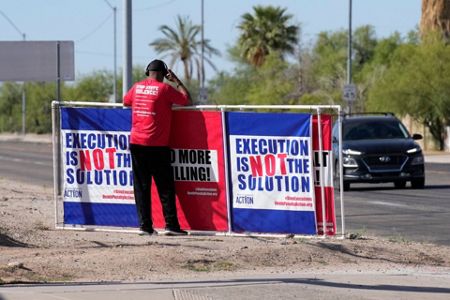After a nearly eight-year break in the state’s administration of the capital penalty, an Arizona man convicted of murdering a college student in 1978 was killed after a previous execution opponents believe was bungled and officials’ problems obtaining lethal injection chemicals.
After a nearly eight-year pause caused by a nearly two-hour execution that opponents believe was mishandled, an Arizona man convicted of murdering a college student in 1978 was sentenced to death on Wednesday.
Clarence Dixon, 66, was killed by lethal injection at the state prison in Florence for the murder of Deana Bowdoin, a 21-year-old Arizona State University student. He was the sixth person executed in the United States in 2022. Frank Strada, a deputy director of the Arizona Department of Corrections, Rehabilitation, and Reentry, announced Dixon’s death late Wednesday morning.
Although the medical team had some trouble locating a vein to inject the fatal chemicals, the execution appeared to follow the state’s protocol. Dixon’s arms were initially tested, and then a groin incision was done. It took roughly 25 minutes to complete this operation.
Dixon’s lips remained open and his body did not move after the medicines were delivered. About 10 minutes after he was injected, the execution was ruled complete.
Dixon’s attorneys attempted to postpone his execution in the final weeks of his life, but courts rejected their contention that he was not mentally competent to be killed and had a reasonable comprehension of why the state wished to execute him. Less than an hour before Dixon’s death, the United States Supreme Court denied a last-minute stay of execution.
Dixon had already denied the option of being executed in Arizona’s rebuilt gas chamber, a procedure that hasn’t been utilized in the United States in more than two decades.
After the death, Leslie James, Bowdoin’s older sister and a witness to the execution, informed reporters that Deana Bowdoin was about to graduate from ASU and was pursuing a career in international marketing. James characterized her sister as a dedicated worker who enjoyed traveling, speaking many languages, and writing poetry.
She described the execution as a relief, but lamented the length of time it took, given that he had been on death row since his conviction in 2008.








